Casting Blanks Cleanliness Evaluation Based on Ultrasonic Microscopy and Morphological Filtering
Abstract
1. Introduction
2. Materials and Ultrasonic Detection
2.1. Test Specimen Preparation
2.2. Ultrasonic Equipment and Detection Parameters
3. Theory of Mathematical Morphology
3.1. Structure Element of Morphology
3.2. Operations of Morphology
3.3. Simulation Experiment of Morphology
3.4. Morphology Filtering of Ultrasonic Images
4. Detection Results and Discussion
4.1. Comparison of Blanks Cleanliness from Different Strands
4.2. Comparison of the Inclusions Size Distribution of the Specimens in Each Strand
4.3. Comparison with the Results Obtained by Metallographic Method
5. Conclusions
Author Contributions
Funding
Conflicts of Interest
References
- Guan, J.; Wang, L.; Zhang, C.; Ma, X. Effects of non-metallic inclusions on the crack propagation in bearing steel. Tribol. Int. 2017, 106, 123–131. [Google Scholar] [CrossRef]
- Atkinson, H.V.; Shi, G. Characterization of inclusions in clean steels: A review including the statistics of extremes methods. Prog. Mater. Sci. 2003, 48, 457–520. [Google Scholar] [CrossRef]
- Janis, D.; Karasev, A.; Jönsson, P.G. Evaluation of inclusion characteristics in low-alloyed steels by mainly using PDA/OES method. ISIJ Int. 2015, 55, 2173–2181. [Google Scholar] [CrossRef]
- Bengtson, A.; Sedlakova, M.; Didriksson, R. Rapid inclusion characterisation by pulse distribution analysis optical emission spectroscopy-recent development. Yejin Fenxi Metall. Anal. 2013, 33 (Suppl. S1), 7–12. [Google Scholar]
- Newman, J.; Hammond, J.; Davis, B.; Suo, Z.; Beech, I.; Paul, D.; Avci, R. Auger electron spectroscopy analysis of pit initiation at MnS nano-inclusions in carbon steel. Microsc. Microanal. 2017, 23 (Suppl. S1), 2258–2259. [Google Scholar] [CrossRef]
- Zhang, X.; Zhang, L.; Yang, W. Characterization of MnS particles in heavy rail steels using different methods. Steel Res. Int. 2017, 88, 1600080. [Google Scholar] [CrossRef]
- Brandaleze, E.; Hereñú, S.; Tormo, J. Characterisation of inclusions in resulphurised microalloyed steel. Ironmak. Steelmak 2013, 40, 216–220. [Google Scholar] [CrossRef]
- Ren, Y.; Wang, Y.; Li, S. Detection of non-metallic inclusions in steel continuous casting billets. Metall. Mater. Trans. B 2014, 45, 1291–1303. [Google Scholar] [CrossRef]
- Lahiri, B.B.; Bagavathiappan, S.; Sebastian, L.T. Effect of non-magnetic inclusions in magnetic specimens on defect detection sensitivity using active infrared thermography. Infrared Phys. Technol. 2015, 68, 52–60. [Google Scholar] [CrossRef]
- Nakai, Y.; Shiozawa, D.; Kikuchi, S.; Obama, T.; Saito, H.; Makino, T.; Neishi, Y. Effects of inclusion size and orientation on rolling contact fatigue crack initiation observed by laminography using ultra-bright synchrotron radiation. Procedia Struct. Integr. 2016, 2, 3117–3124. [Google Scholar] [CrossRef][Green Version]
- Čapek, J.; Knapek, M.; Minárik, P. Characterization of deformation mechanisms in Mg alloys by advanced acoustic emission methods. Metals 2018, 8, 644. [Google Scholar] [CrossRef]
- Felice, M.V.; Fan, Z. Sizing of flaws using ultrasonic bulk wave testing: A review. Ultrasonics 2018, 88, 26–42. [Google Scholar] [CrossRef]
- Taheri, H.; Kilpatrick, M.; Norvalls, M. Investigation of nondestructive testing methods for friction stir welding. Metals 2019, 9, 624. [Google Scholar] [CrossRef]
- Zhou, P.; Qian, Q.; Li, M. Characterizing non-metallic inclusions in steel by ultrasonic spectrum. Acta Acust. United Acust. 2018, 104, 39–47. [Google Scholar] [CrossRef]
- Midroit, F.; Merchi, F.; Meheux-Millot, M. Non-metallic inclusion density in bearing steel characterized by ultrasonic testing. ASTM Int. 2015, 1, 116–125. [Google Scholar]
- Liu, H.; Zhang, L.; Liu, H.F. High-frequency ultrasonic methods for determining corrosion layer thickness of hollow metallic components. Ultrasonics 2018, 89, 166–172. [Google Scholar] [CrossRef]
- Nishimura, N.; Fujimoto, K.; Ogi, Y.; Ito, T. Evolution of spall-damage in iron caused by repeated plate impacts: Ultrasonic evaluation. Ultrasonics 2018, 83, 88–93. [Google Scholar] [CrossRef]
- Tiwari, K.A.; Raisutis, R. Post-processing of ultrasonic signals for the analysis of defects in wind turbine blade using guided waves. J. Strain Anal. Eng. Des. 2018, 53, 546–555. [Google Scholar] [CrossRef]
- Sharma, G.K.; Kumar, A.; Jayakumar, T. Ensemble Empirical Mode Decomposition based methodology for ultrasonic testing of coarse grain austenitic stainless steels. Ultrasonics 2015, 57, 167–178. [Google Scholar] [CrossRef]
- Chong, S.Y.; Lee, J.R.; Park, C.Y. Statistical threshold determination method through noise map generation for two dimensional amplitude and time-of-flight mapping of guided waves. J. Sound Vib. 2013, 332, 1252–1264. [Google Scholar] [CrossRef]
- Wu, B.; Huang, Y.; Krishnaswamy, S. A Bayesian approach for sparse flaw detection from noisy signals for ultrasonic NDT. NDT E Int. 2017, 85, 76–85. [Google Scholar] [CrossRef]
- Iyer, S.; Sinha, S.; Pedrick, M.K.; Tittmann, B.R. Evaluation of ultrasonic inspection and imaging systems for concrete pipes. Autom. Constr. 2012, 22, 149–164. [Google Scholar] [CrossRef]
- Li, X.P.; Choi, J.; Kwon, O.D.; Yim, C. Investigation of inclusion detection by acoustic microscope. Met. Mater. Int. 1999, 5, 241–249. [Google Scholar] [CrossRef]
- Jacobi, H.F. The MIDAS technique for detection of macroscopic inclusions in CC-material: Fundamentals and practical applications. Steel Res. Int. 2005, 76, 595–602. [Google Scholar] [CrossRef]
- Namdari, F.; Salehi, M. High-speed protection scheme based on initial current traveling wave for transmission lines employing mathematical morphology. IEEE Trans. Power Deliv. 2016, 32, 246–253. [Google Scholar] [CrossRef]
- Bibiloni, P.; González-Hidalgo, M.; Massanet, S. General-purpose curvilinear object detection with fuzzy mathematical morphology. Appl. Soft. Comput. 2017, 60, 655. [Google Scholar] [CrossRef]
- Hu, Z.; Wang, C.; Zhu, J. Bearing fault diagnosis based on an improved morphological filter. Measurement 2016, 80, 163–178. [Google Scholar] [CrossRef]
- Li, X.; Li, B.; Liu, Z. Detection and numerical simulation of non-metallic inclusions in continuous casting slab. Steel Res. Int. 2019, 90, 1800423. [Google Scholar] [CrossRef]

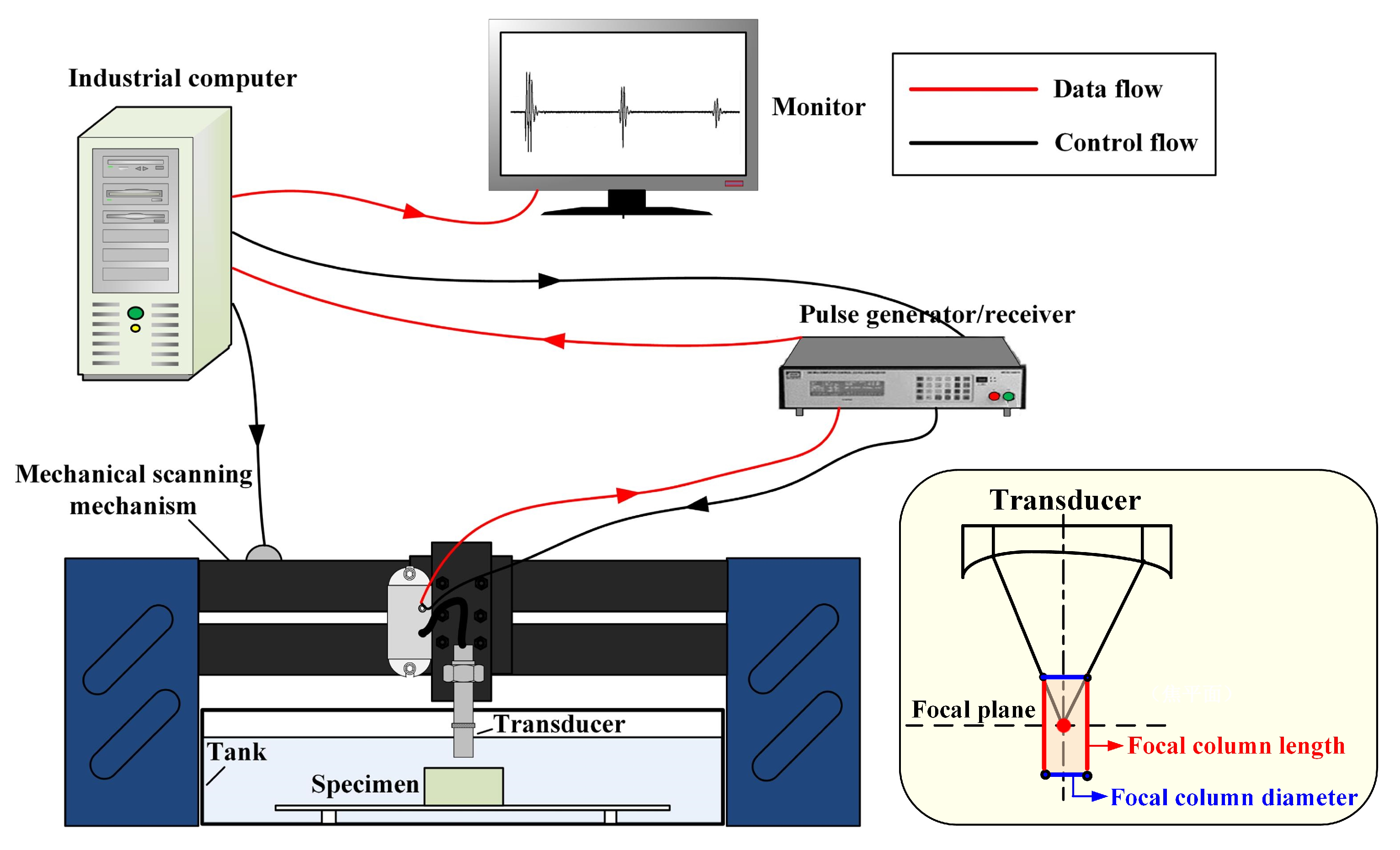
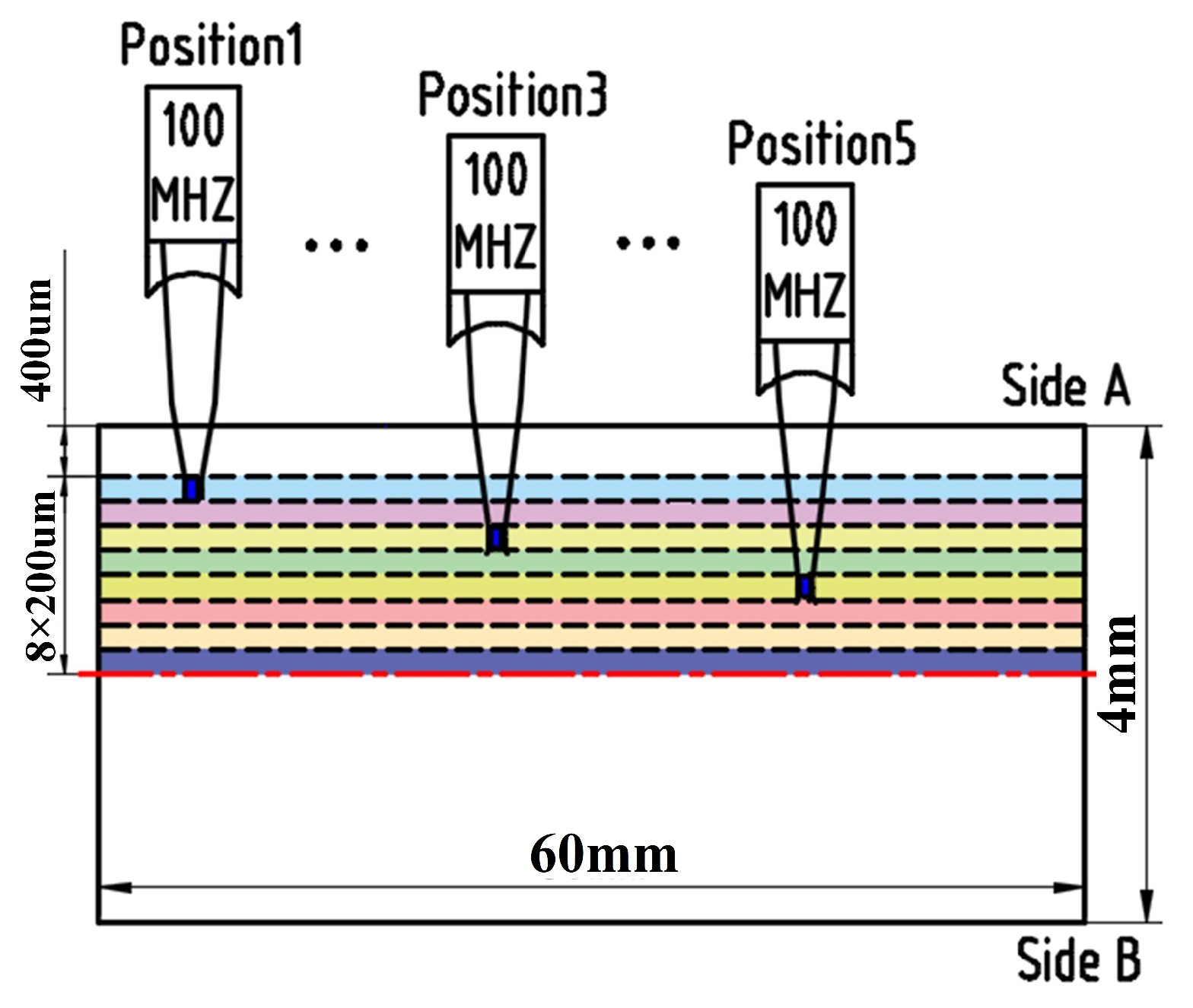


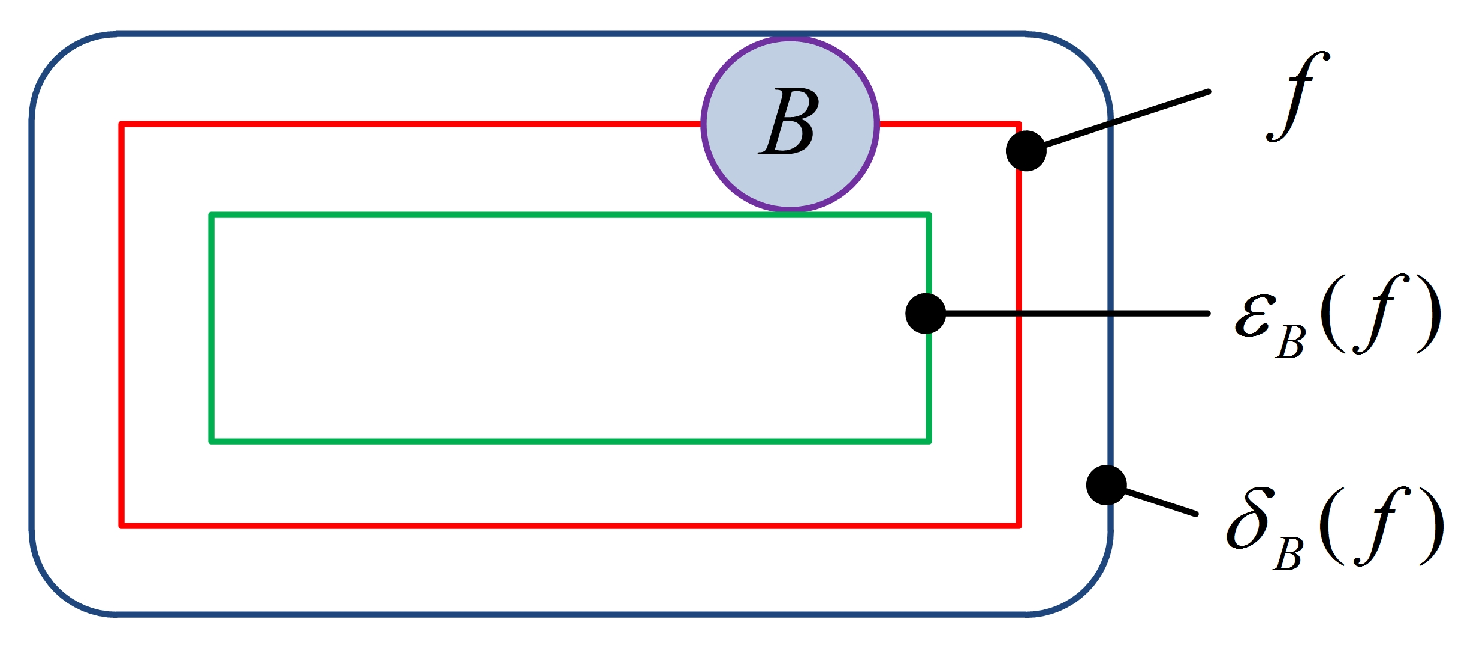
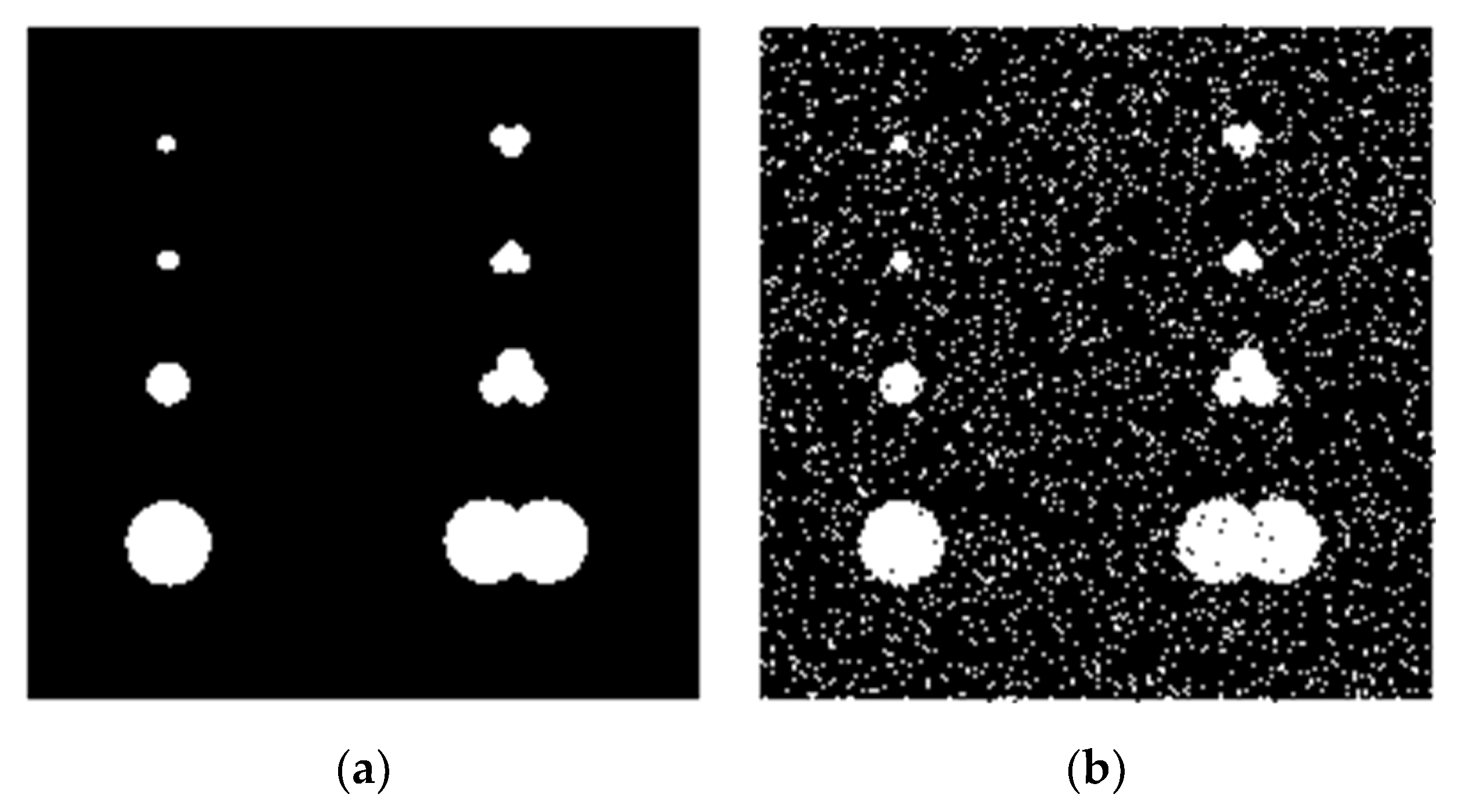
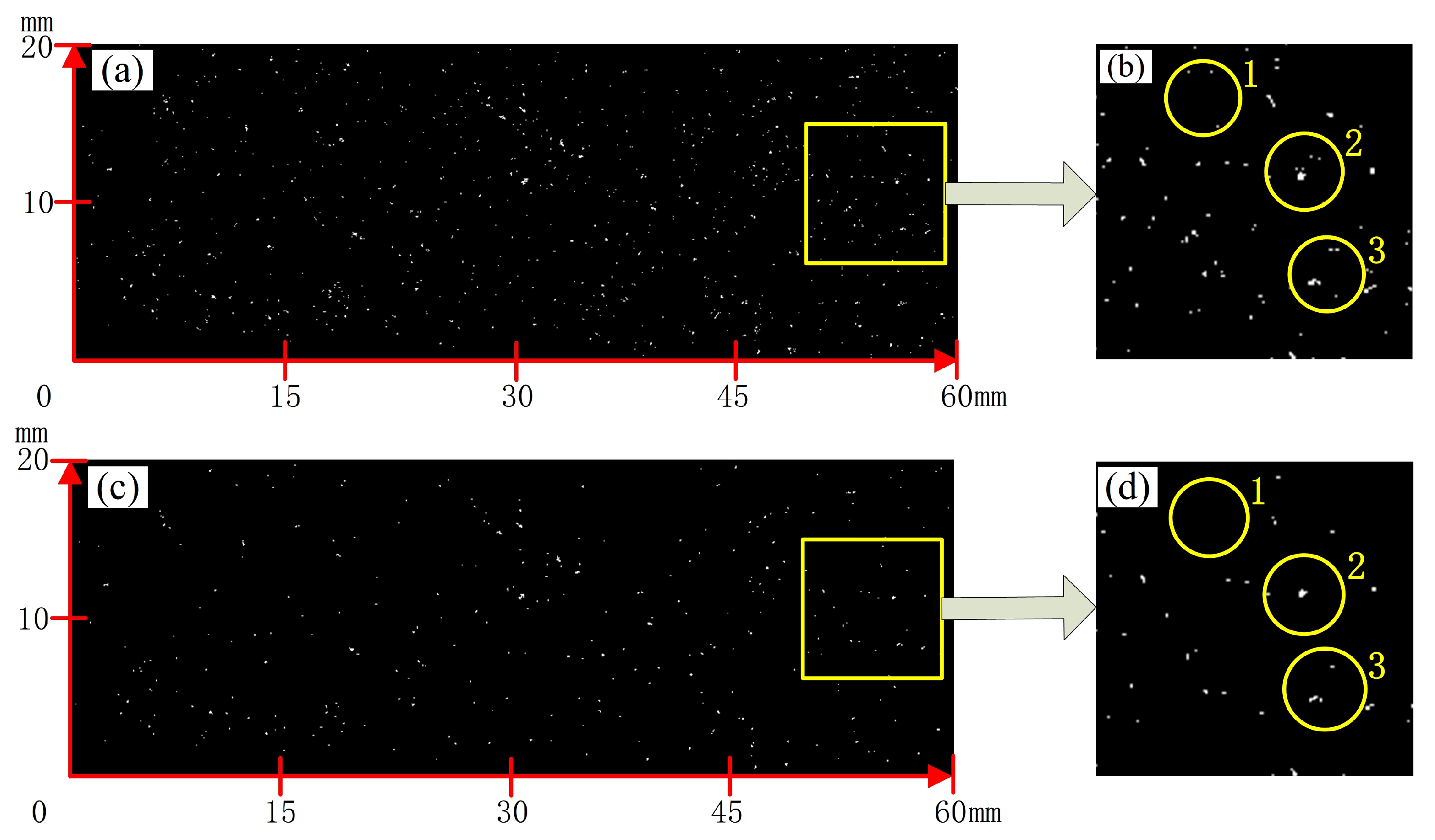
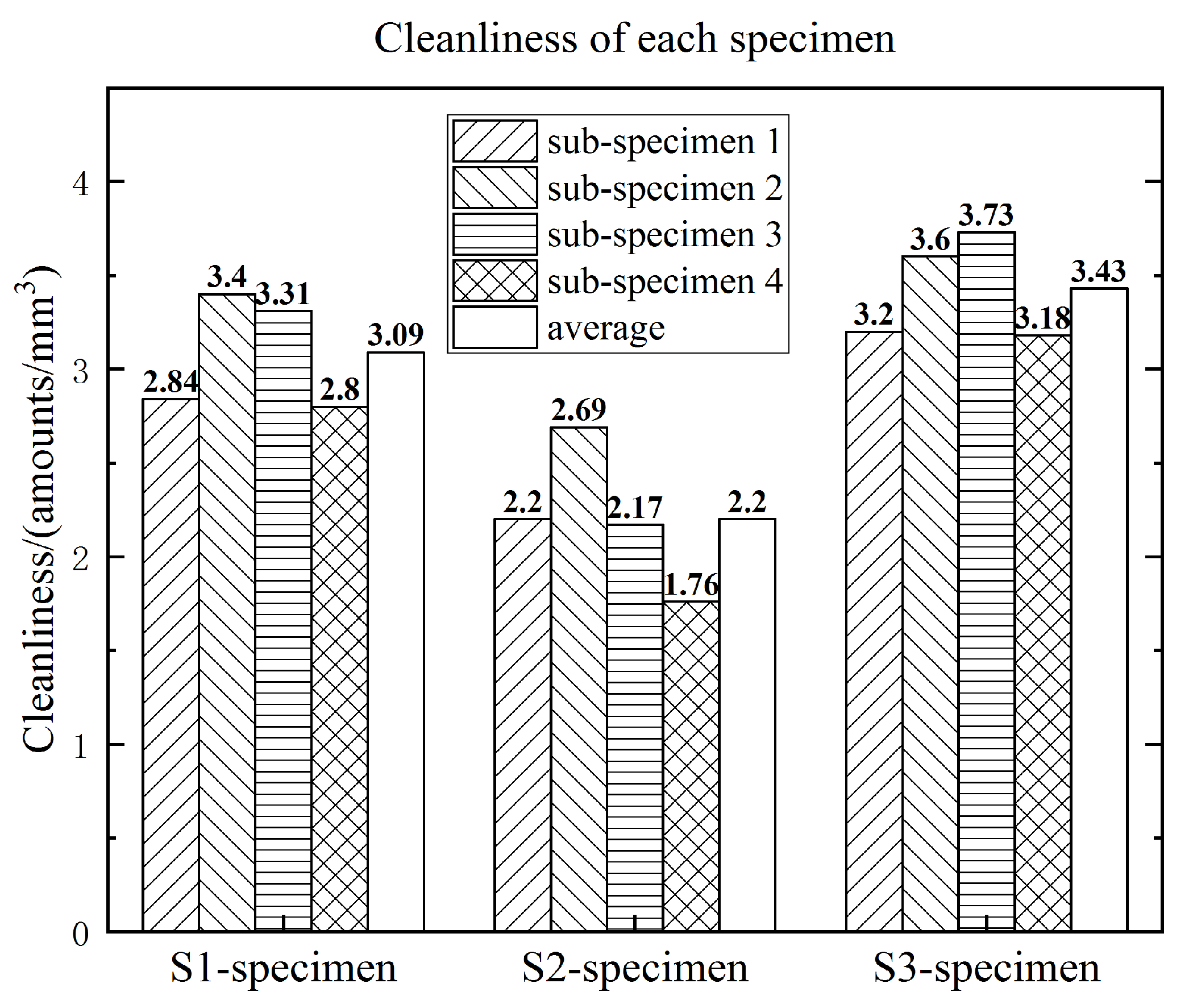

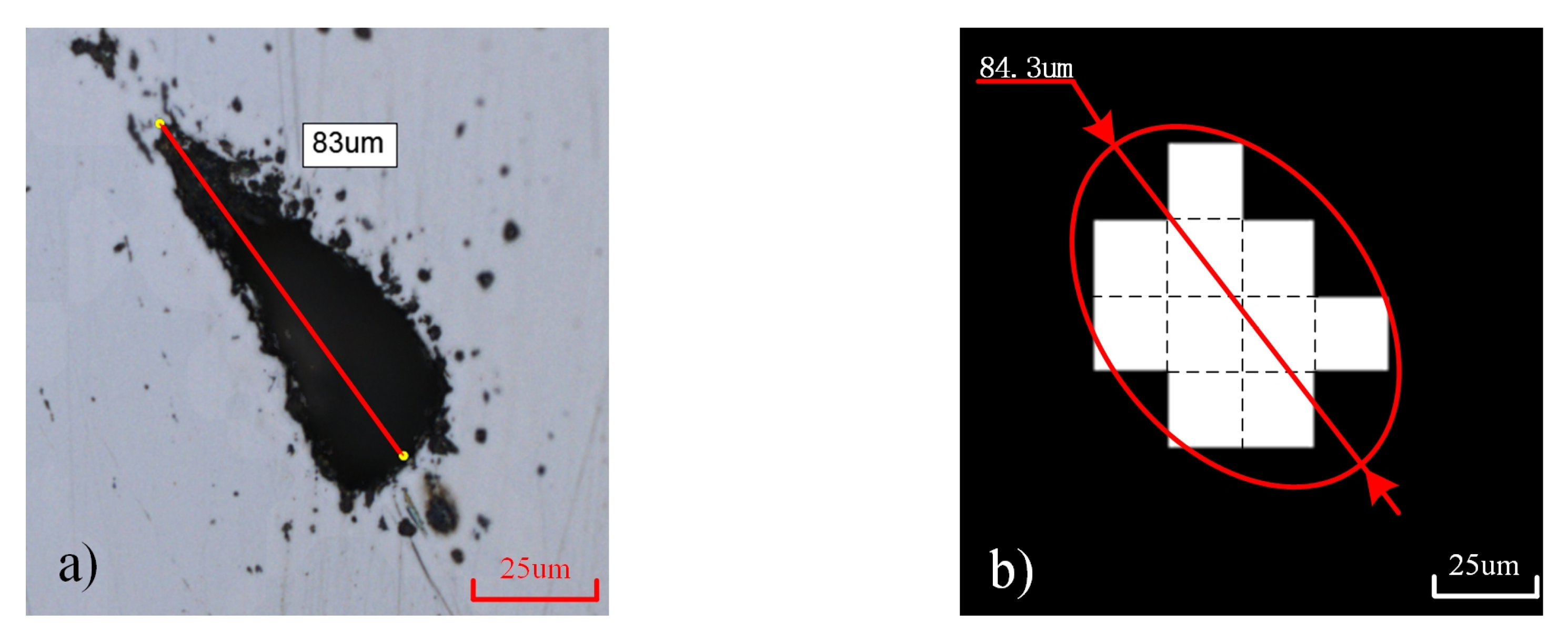
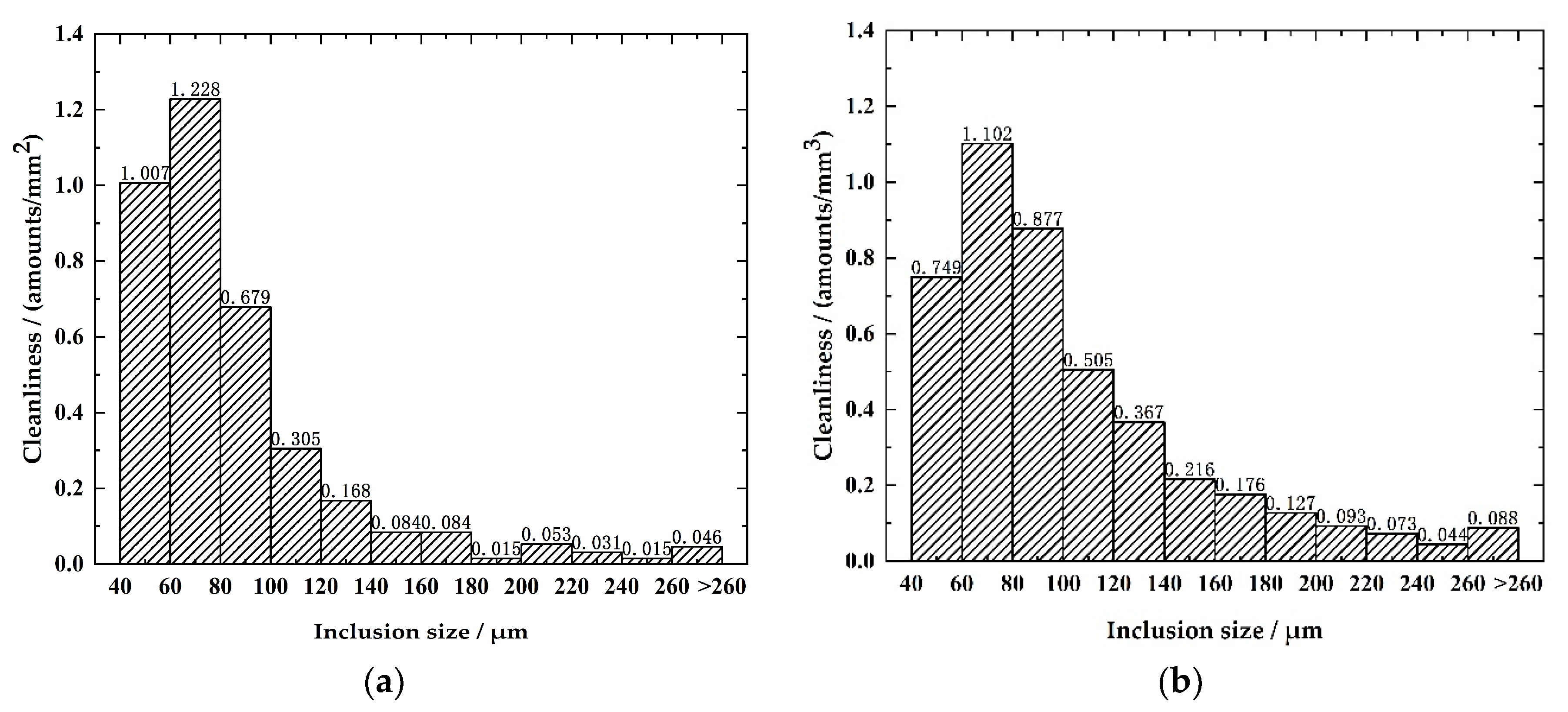
| Probe Frequency | Focal Column Diameter | Focal Column Length | Inspection Resolution | Scanning Step | Thickness of Each Layer Tested | Inspection Layers | Total Inspection Thickness |
|---|---|---|---|---|---|---|---|
| 100 MHz | 40 μm | 106 μm | 30 μm | 20 μm | 200 μm | 16 | 3200 μm |
| Line SE | Triangular SE | Circular SE | |
|---|---|---|---|
| Closed operation | 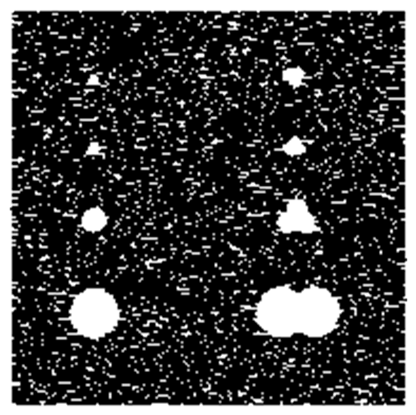 | 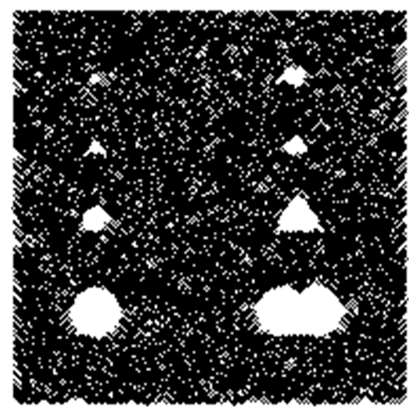 | 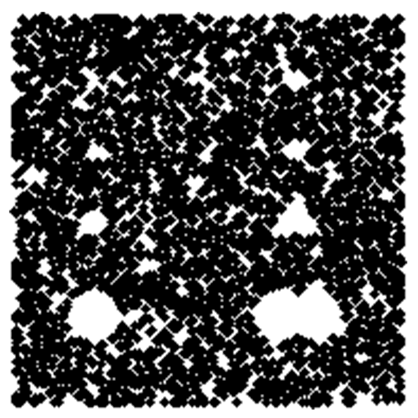 |
| Open operation |  |  |  |
| Method | Percentage (%) |
|---|---|
| LSCM | 0.162 |
| Ultrasonic Microscope | 0.198 |
© 2020 by the authors. Licensee MDPI, Basel, Switzerland. This article is an open access article distributed under the terms and conditions of the Creative Commons Attribution (CC BY) license (http://creativecommons.org/licenses/by/4.0/).
Share and Cite
Ding, H.; Qian, Q.; Li, X.; Wang, Z.; Li, M. Casting Blanks Cleanliness Evaluation Based on Ultrasonic Microscopy and Morphological Filtering. Metals 2020, 10, 796. https://doi.org/10.3390/met10060796
Ding H, Qian Q, Li X, Wang Z, Li M. Casting Blanks Cleanliness Evaluation Based on Ultrasonic Microscopy and Morphological Filtering. Metals. 2020; 10(6):796. https://doi.org/10.3390/met10060796
Chicago/Turabian StyleDing, Heng, Qingting Qian, Xue Li, Zhu Wang, and Min Li. 2020. "Casting Blanks Cleanliness Evaluation Based on Ultrasonic Microscopy and Morphological Filtering" Metals 10, no. 6: 796. https://doi.org/10.3390/met10060796
APA StyleDing, H., Qian, Q., Li, X., Wang, Z., & Li, M. (2020). Casting Blanks Cleanliness Evaluation Based on Ultrasonic Microscopy and Morphological Filtering. Metals, 10(6), 796. https://doi.org/10.3390/met10060796




